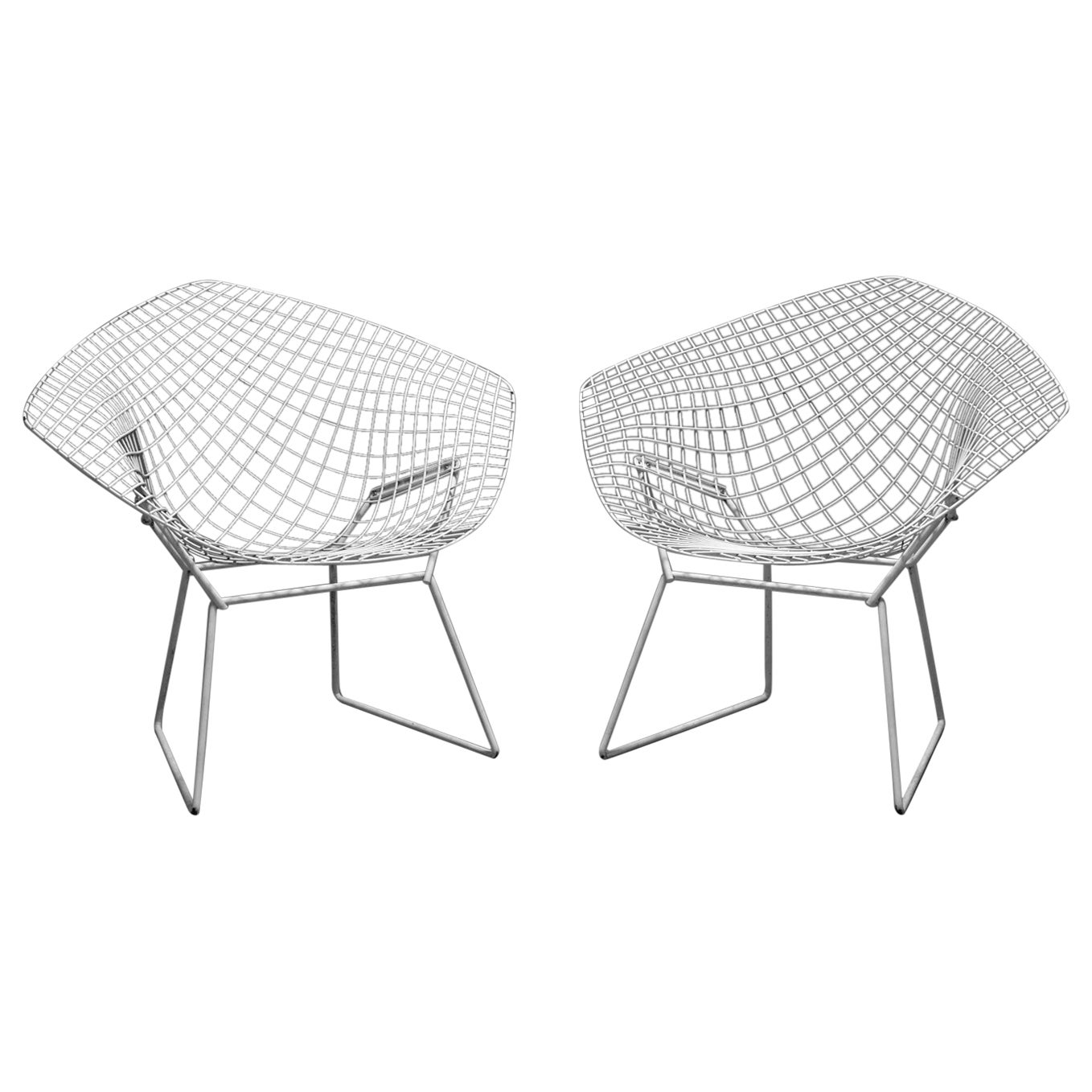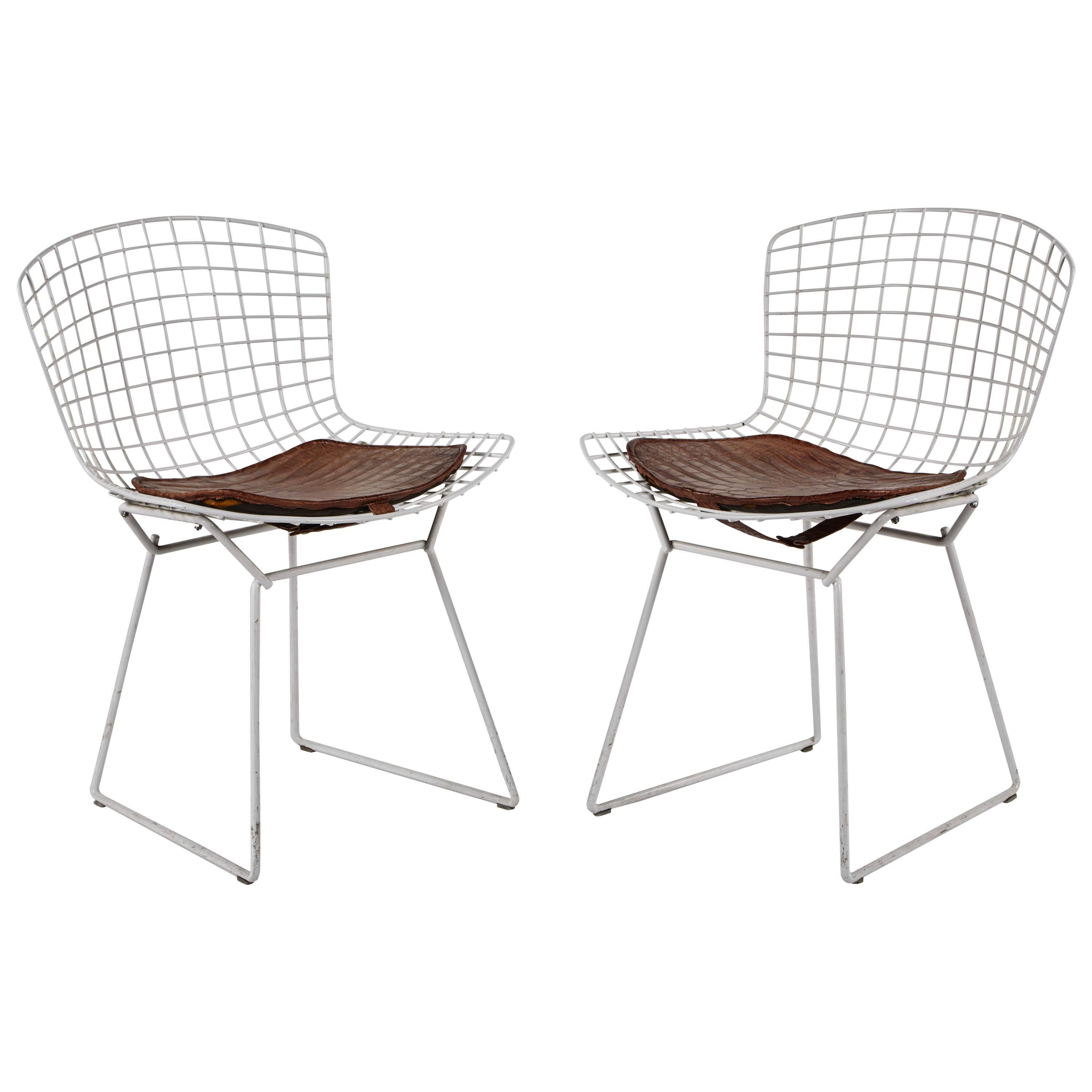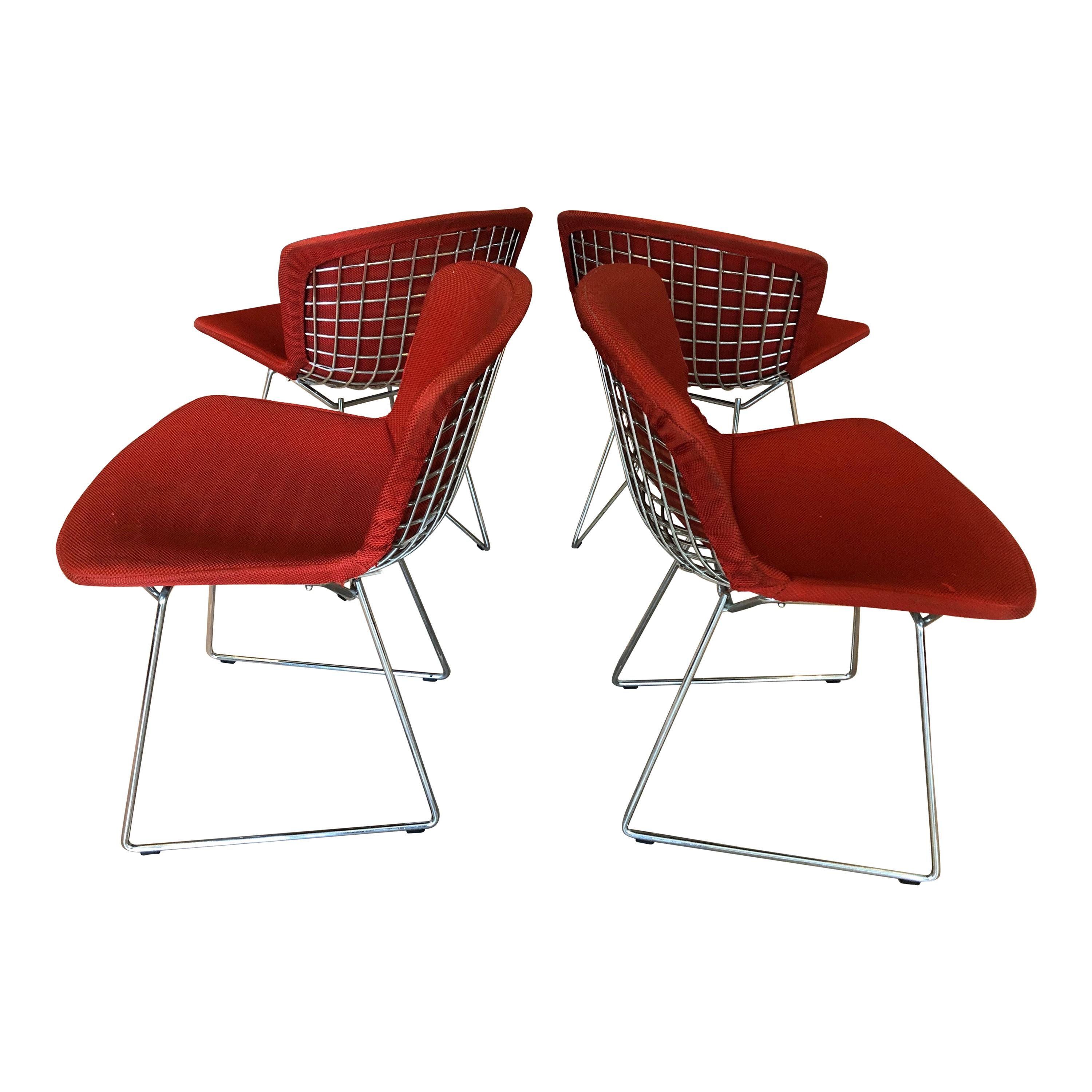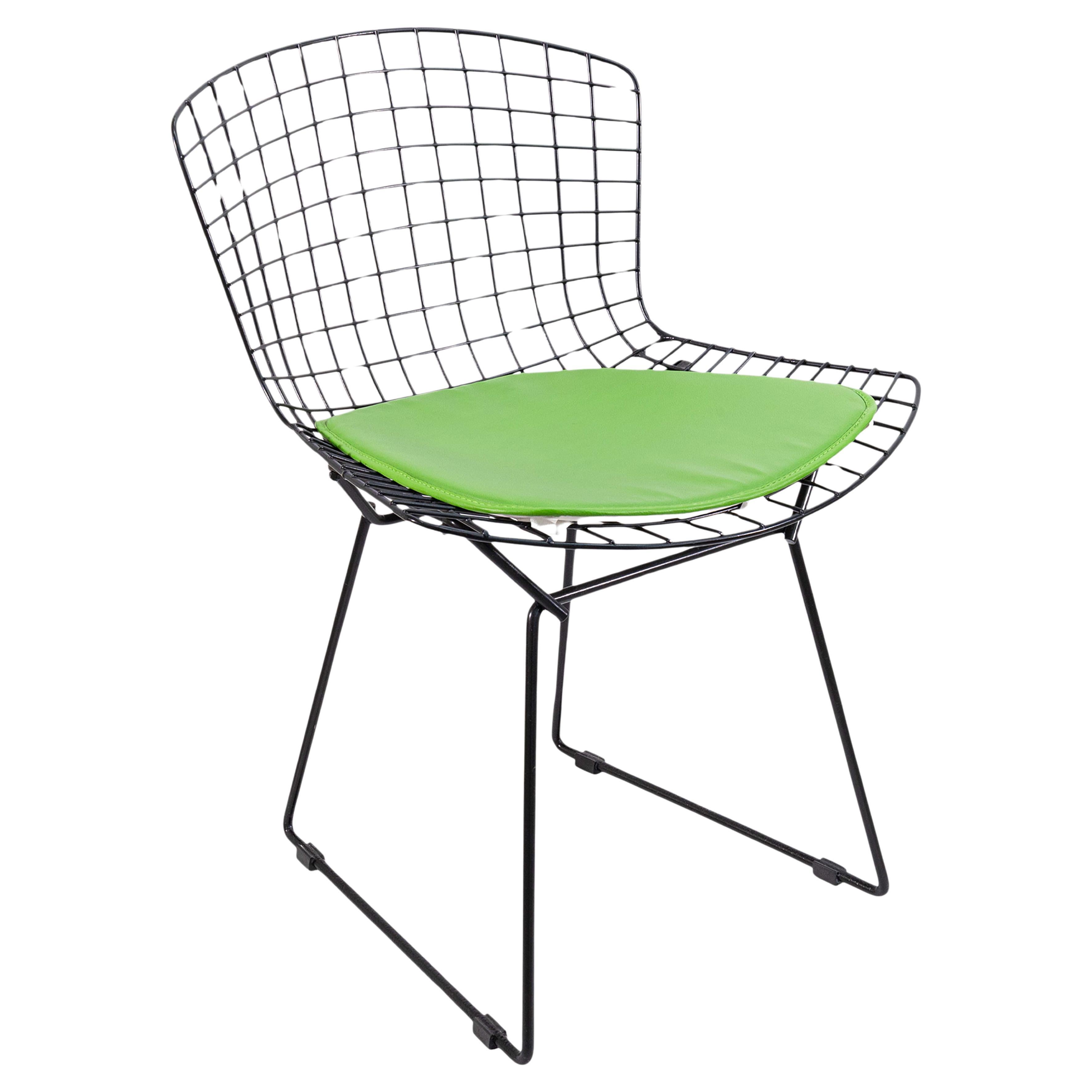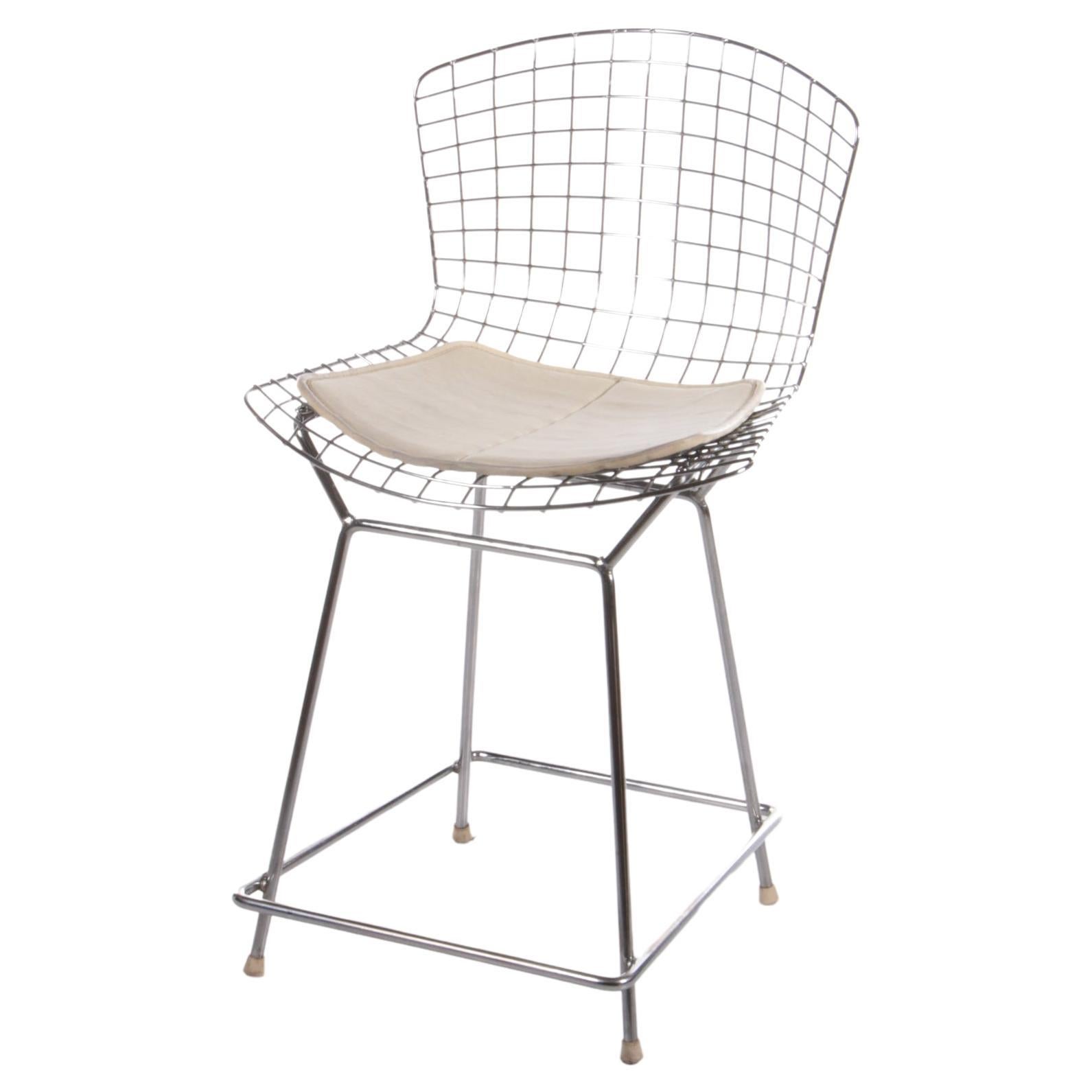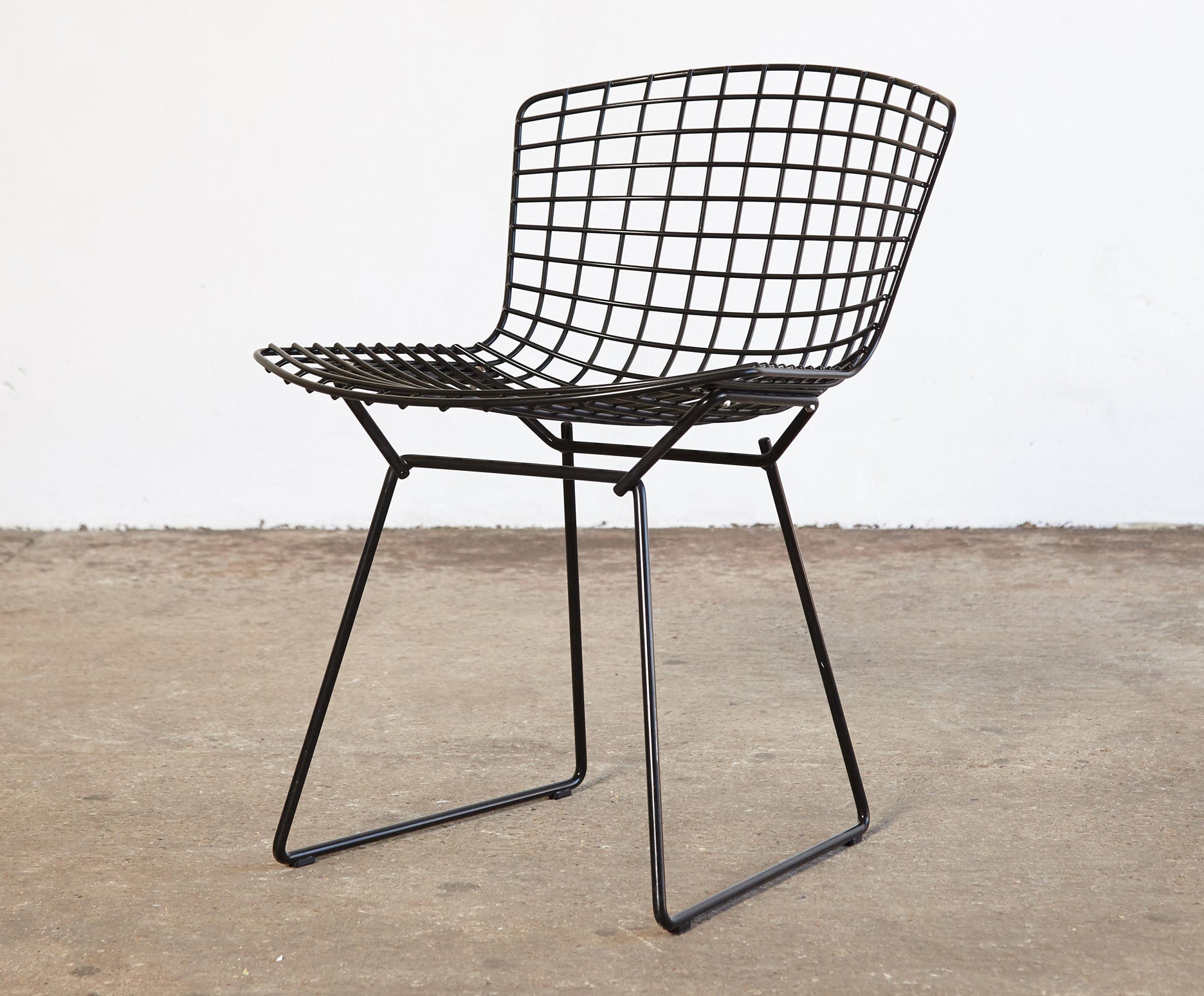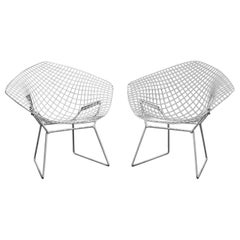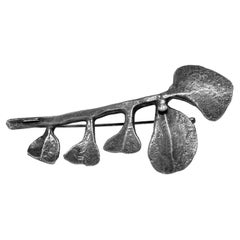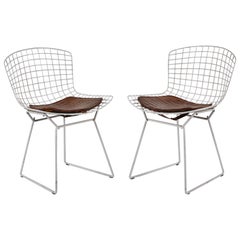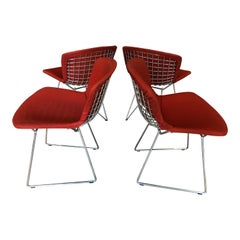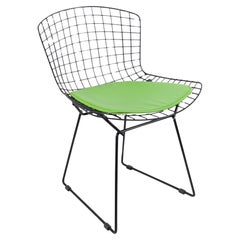Bertoia, Eight White Welded Steel Chairs with Four Red Cushions
About the Item
- Creator:Harry Bertoia (Designer)
- Design:
- Dimensions:Height: 28.75 in (73.03 cm)Width: 21.75 in (55.25 cm)Depth: 19.75 in (50.17 cm)Seat Height: 17.75 in (45.09 cm)
- Sold As:Set of 12
- Style:Mid-Century Modern (Of the Period)
- Materials and Techniques:
- Place of Origin:
- Period:
- Date of Manufacture:1952
- Condition:Wear consistent with age and use. Harry Bertoia's 1950 experiment with bending metal rods into practical art produced a revered collection of seating, including the exquisite Bertoia side chair. Innovative, comfortable, strikingly handsome, very strong & durable + four red cushions.
- Seller Location:Bloomfield Hills, MI
- Reference Number:1stDibs: LU7781233485392
Bertoia Side Chair
When Hans and Florence Knoll invited Italian-American artist Harry Bertoia (1915–78) to move from California to Pennsylvania in 1950 to work with their new design firm, they did not ask him to develop any specific pieces but instead to investigate whatever interested him. That open-ended experimentation led to the 1952 Bertoia Side chair, which was fitted with a fluid metal lattice that gave the seating an ethereal quality. Bertoia considered his collection of chairs created for Knoll Associates to be “mainly made of air, like sculpture,” as he bent steel wire into striking lightweight forms.
While these chairs were innovative in their use of industrial materials, they also had a progressive approach to the ergonomics of seating. Bertoia had previously collaborated with Charles and Ray Eames on molded plywood chairs — what would become the LCW (Lounge Chair Wood) — yet was miffed by the lack of credit for his work. He went on to take a job in engineering for the human body at the Point Loma Naval Electrical Lab in La Jolla, California, during which he created metal sculptures in his spare time. The opportunity from Knoll, another of his former classmates at the famed Cranbrook Academy of Art in Michigan — Bertoia met the Eameses and Knoll and later taught metalworking there — gave him the time and space to devote himself to his own ideas independently. And, as with all Knoll designers, he would get named recognition for his designs.
In a garage in Bally, Pennsylvania, he set up his metal shop and developed ideas for the welded steel grids he would use in his seating. At the time, most chairs were constructed from wood; Bertoia saw the potential for graceful and comfortable designs in the strong material of metal. Along with the Bertoia Side chair, he created the Diamond chair with a diamond pattern in its metalwork and the undulating Asymmetric Chaise (which was too complicated to manufacture until 2005), all with the transparent volume that gives his metal furniture a sense of floating.
Although he would shift to making art rather than furniture, Bertoia still worked on a number of sculptural and architectural designs for the Knoll Planning Unit in the years that followed. Knoll, Inc. has produced the Bertoia Side chair since it was introduced, with its durable materials and optional upholstery or seat covers that can be snapped on and off, making it popular for indoor and outdoor seating.
Harry Bertoia
Sculptor, furniture and jewelry designer, graphic artist and metalsmith, Harry Bertoia was one of the great cross-disciplinarians of 20th-century art and design and a central figure in American mid-century modernism. Among furniture aficionados, Bertoia is known for his chairs such as the wire-lattice Diamond chair (and its variants such as the tall-backed Bird chair) designed for Knoll Inc. and first released in 1952.
As an artist, he is revered for a style that was his alone. Bertoia’s metal sculptures are by turns expressive and austere, powerful and subtle, intimate in scale and monumental. All embody a tension between the intricacy and precision of Bertoia’s forms and the raw strength of his materials: steel, brass, bronze and copper.
Fortune seemed to guide Bertoia’s artistic development. Born in northeastern Italy, Bertoia immigrated to the United States at age 15, joining an older brother in Detroit. He studied drawing and metalworking in the gifted student program at Cass Technical High School. Recognition led to awards that culminated, in 1937, in a teaching scholarship to attend the Cranbrook Academy of Art in suburban Bloomfield Hills, one of the great crucibles of modernism in America.
At Cranbrook, Bertoia made friendships — with architect Eero Saarinen, designers Charles and Ray Eames and Florence Schust Knoll and others — that shaped the course of his life. He taught metalworking at the school, and when materials rationing during World War II limited the availability of metals, Bertoia focused on jewelry design. He also experimented with monotype printmaking, and 19 of his earliest efforts were bought by the Guggenheim Museum.
In 1943, he left Cranbrook to work in California with the Eameses, helping them develop their now-famed plywood furniture. (Bertoia received scant credit.) Late in that decade, Florence and Hans Knoll persuaded him to move east and join Knoll Inc. His chairs became and remain perennial bestsellers. Royalties allowed Bertoia to devote himself full-time to metal sculpture, a medium he began to explore in earnest in 1947.
By the early 1950s Bertoia was receiving commissions for large-scale works from architects — the first came via Saarinen — as he refined his aesthetic vocabulary into two distinct skeins. One comprises his “sounding sculptures” — gongs and “Sonambient” groupings of rods that strike together and chime when touched by hand or by the wind. The other genre encompasses Bertoia’s naturalistic works: abstract sculptures that suggest bushes, flower petals, leaves, dandelions or sprays of grass.
As you will see on these pages, Harry Bertoia was truly unique; his art and designs manifest a wholly singular combination of delicacy and strength.
Find vintage Harry Bertoia sculptures, armchairs, benches and other furniture and art on 1stDibs.
- ShippingRetrieving quote...Shipping from: Detroit, MI
- Return Policy
More From This Seller
View AllMid-20th Century American Mid-Century Modern Chairs
Steel
Mid-20th Century American Mid-Century Modern Abstract Sculptures
Coral, Lapis Lazuli, Sterling Silver
Mid-20th Century American Mid-Century Modern Abstract Sculptures
Sterling Silver
Vintage 1980s American Expressionist Abstract Sculptures
Steel
Late 20th Century American Modern Abstract Sculptures
Steel
Vintage 1930s Polish Mid-Century Modern Dining Room Chairs
Steel, Chrome
You May Also Like
Mid-20th Century American Mid-Century Modern Chairs
Steel
Mid-20th Century American Mid-Century Modern Dining Room Chairs
Metal
Mid-20th Century European Mid-Century Modern Dining Room Chairs
Metal
Mid-20th Century American Mid-Century Modern Chairs
Aluminum
Vintage 1970s German Mid-Century Modern Chairs
Chrome
20th Century American Mid-Century Modern Chairs
Metal
